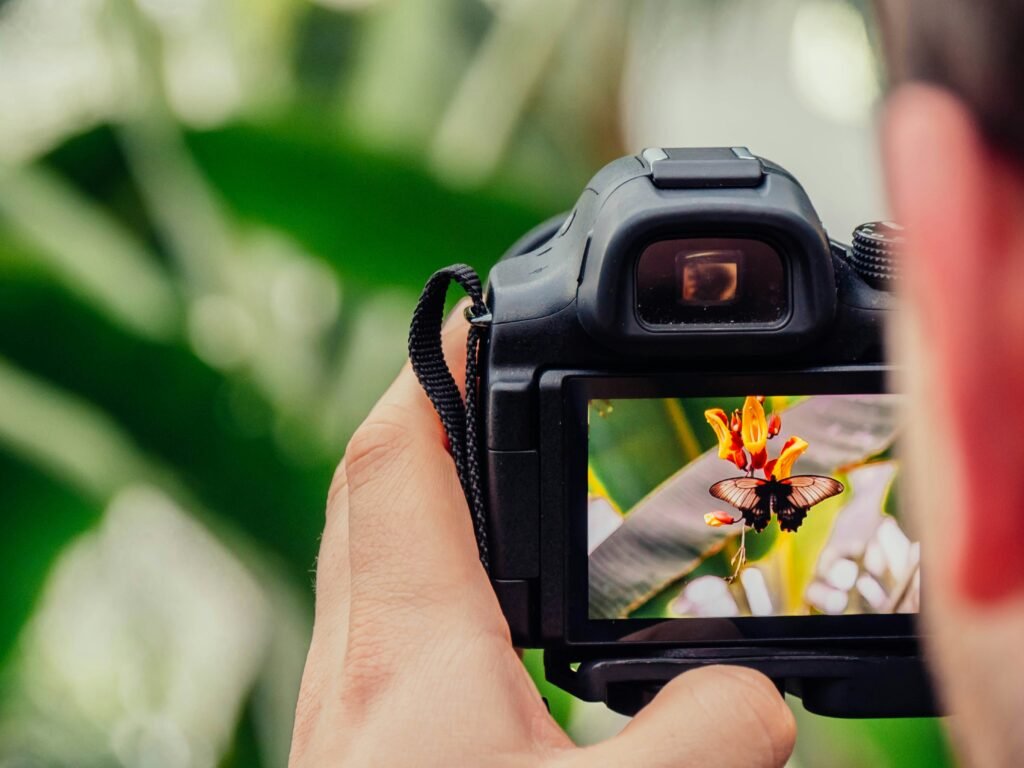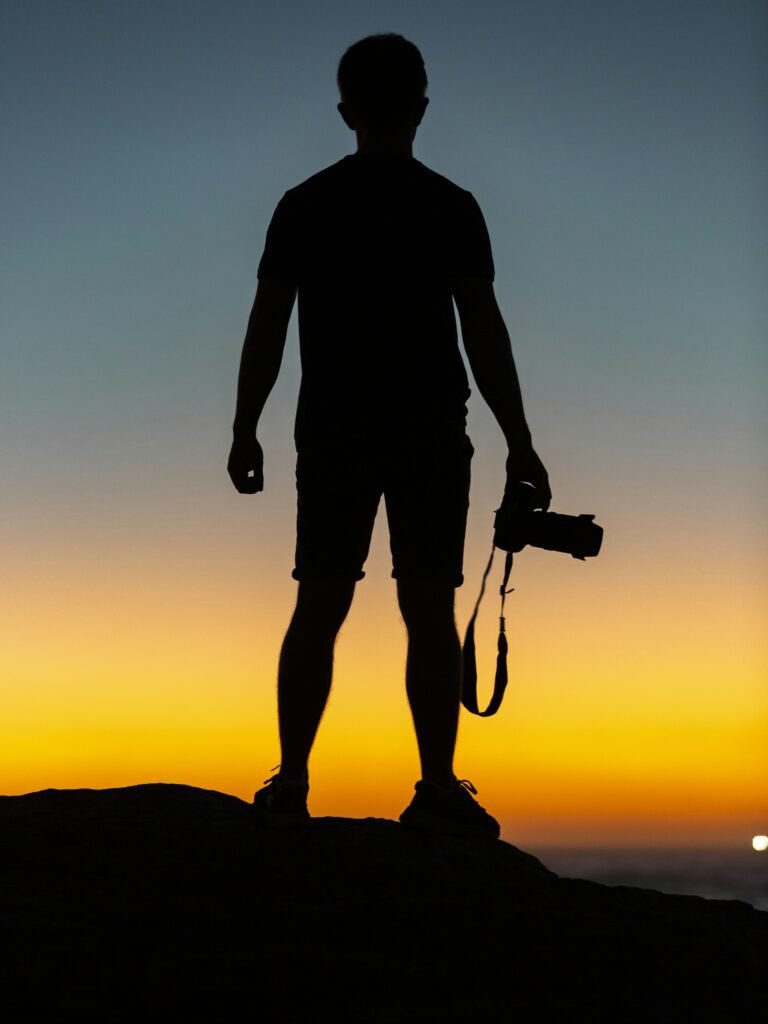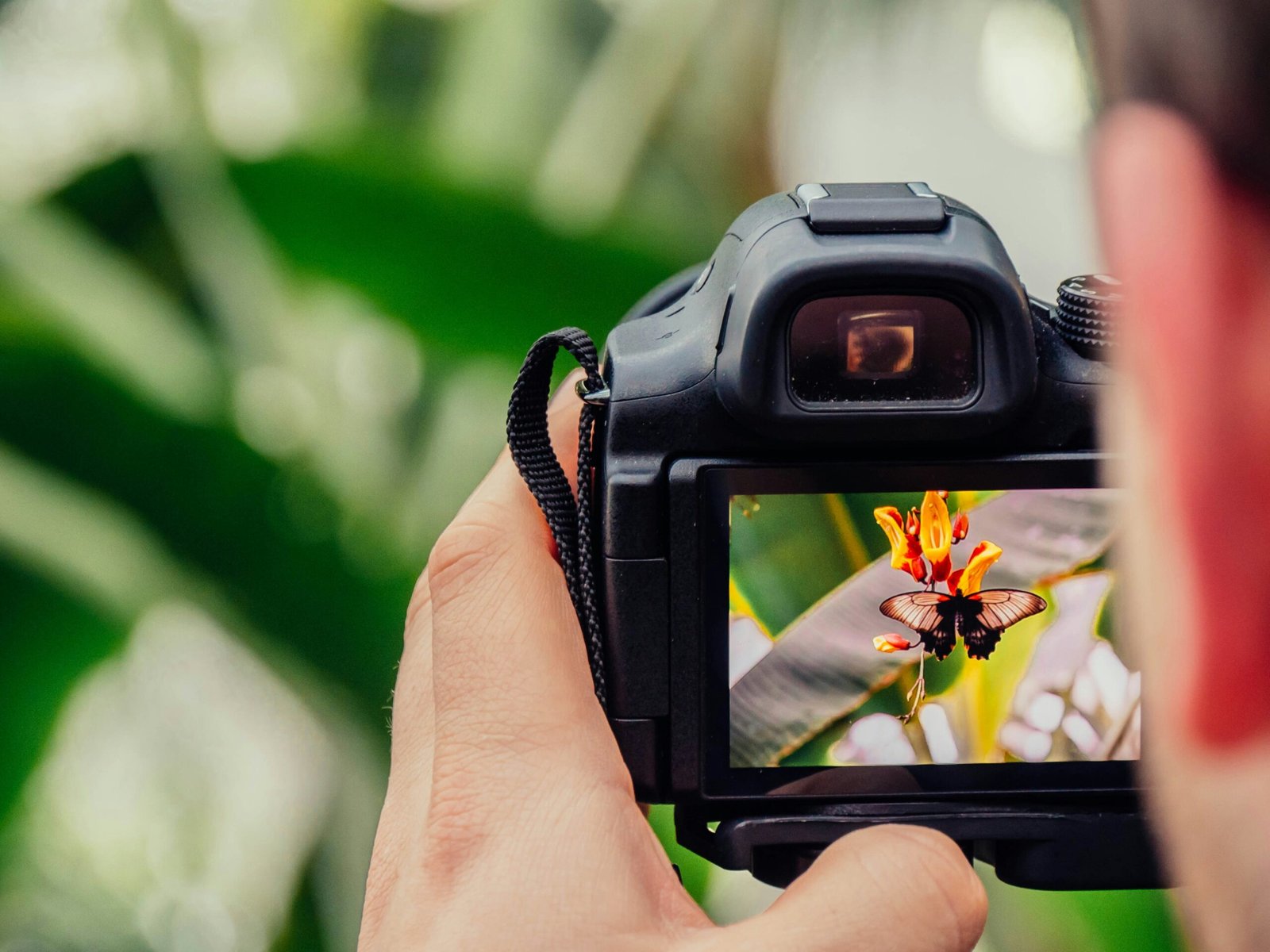If you thought that capturing professional headshots required expensive equipment, think again! In this article, you’ll discover the secret to taking stunning headshots using just your iPhone. Whether you’re a budding photographer or simply want to enhance your online presence, we’ll guide you through the process step by step, unveiling valuable techniques and insider tips along the way. From adjusting lighting and composition to capturing genuine expressions, get ready to revolutionize your selfie game with the power of your iPhone camera. Get your iPhone ready, because it’s time to unlock your true potential and create captivating headshots like never before!

1. Understanding the Importance of Headshots
Why Headshots Matter
Headshots play a crucial role in today’s digital world. They serve as a visual representation of yourself, conveying professionalism and making a strong first impression. Whether you’re an aspiring model, actor, entrepreneur, or simply someone who wants to showcase their personality on social media, having high-quality headshots can make all the difference in capturing attention and leaving a lasting impact.
Different Purposes of Headshots
Headshots serve various purposes depending on the industry or personal goals. In the professional world, headshots are commonly used for resumes, LinkedIn profiles, business websites, and company directories. They help potential employers and clients establish a sense of trust and professionalism. On the other hand, aspiring actors and models rely on headshots to impress casting directors and agencies, as these images often determine whether they will be called in for auditions or castings.
Benefits of Using an iPhone for Headshots
The iPhone has revolutionized the way we capture and share photographs. With its advanced camera technology and convenience, it has become a popular choice for taking headshots. Here are some benefits of using an iPhone for headshots:
-
Convenience and Accessibility: Carrying a professional camera around at all times may not always be practical. However, your iPhone is always within reach, allowing you to capture impromptu headshots whenever the opportunity arises.
-
Cost-Effective: Hiring a professional photographer for headshots can be expensive. With an iPhone, you can achieve high-quality results without breaking the bank.
-
User-Friendly: iPhones are known for their intuitive interfaces. The camera app is easy to navigate, making it simple for anyone, regardless of their photography expertise, to capture stunning headshots.
-
Versatility: iPhones offer a wide range of editing apps and features that allow you to enhance and customize your headshots according to your preference. This versatility gives you the freedom to express your unique style.
By following the tips and techniques outlined in this article, you can harness the power of your iPhone to capture professional-looking headshots that effectively convey your personality and make a lasting impression.
2. Preparing Your iPhone for Headshots
Choosing the Right iPhone Model
When it comes to capturing headshots, having a newer iPhone model with advanced camera capabilities can greatly enhance the quality of your photos. iPhones from the past few years, such as the iPhone X, iPhone XR, iPhone 11, and iPhone 12 series, offer improved image stabilization, enhanced low-light performance, and higher resolution sensors. However, even older iPhone models can still produce excellent results with the right techniques and lighting conditions.
Optimizing Camera Settings
Before you start taking headshots, it’s essential to optimize your iPhone’s camera settings to ensure optimal results. Here are some key settings to consider:
-
Image Format: Set your iPhone to capture photos in the highest resolution format available, such as HEIC or JPEG. This will ensure maximum clarity and detail in your headshots.
-
Gridlines: Enable the gridlines feature in your camera settings. Gridlines help you align your subject and compose aesthetically pleasing shots using the rule of thirds (more on that later).
-
Live Photos: Disable the Live Photos feature if you don’t need it. This will prevent any accidental movements or blurs when capturing headshots.
-
HDR: Experiment with the HDR (High Dynamic Range) feature to achieve better overall exposure and highlight details. It automatically combines multiple exposures for a more balanced image.
Cleaning the Lens
A smudged lens can severely affect the quality of your headshots by introducing unwanted blurs or distortions. Before you begin shooting, gently wipe the lens with a microfiber cloth or a lens cleaning solution to remove any fingerprints, dust, or smudges. By keeping your lens clean, you ensure that your headshots will be sharp, clear, and free of any distractions.
Ensuring Sufficient Storage Space
Headshots, especially if captured in high resolution, can take up a significant amount of storage space on your iPhone. Before your photoshoot, ensure that your iPhone has sufficient storage available to avoid potential interruptions or running out of space. Consider offloading other unnecessary files or apps to free up some space and make room for your headshots.

3. Setting up the Scene for Headshots
Selecting a Suitable Location
The location you choose for your headshots can greatly impact the overall look and feel of the images. It’s important to select a location that aligns with the purpose and style of your headshots. Whether you opt for an indoor or outdoor setting, ensure that the background is clean, uncluttered, and complements your subject rather than distracting from them.
For professional headshots, a neutral or solid-colored backdrop is often preferred to maintain a clean and polished look. On the other hand, outdoor locations can provide a more natural and dynamic backdrop, especially for personal or creative headshots.
Considering Lighting Options
Lighting plays a crucial role in capturing headshots, as it can dramatically affect the mood, emphasis, and overall quality of the images. There are two main lighting options to consider:
-
Natural Light: Utilizing natural light can produce stunning and flattering results. Choose a location with ample natural light, such as near a window or in shaded outdoor areas. Avoid direct sunlight, as it can create harsh shadows and cause your subject to squint.
-
Artificial Light: In situations where natural light is limited or not ideal, you can experiment with artificial lighting. Consider using softbox lights, ring lights, or even desk lamps with diffusers to create a soft and even lighting setup.
Using Natural Light to Your Advantage
When shooting headshots, natural light can be your best friend. It offers a soft, flattering, and natural-looking illumination that enhances facial features and brings out the subject’s best qualities. Here are a few tips for using natural light effectively:
-
Golden Hour: Shoot during the golden hour, which is the hour after sunrise or before sunset. The golden hour offers warm, soft, and evenly diffused lighting that adds a beautiful glow to your headshots.
-
Diffusing Harsh Light: If shooting during the day under direct sunlight, use a diffuser to soften the light and eliminate harsh shadows. This can be as simple as holding a white sheet or translucent umbrella between the light source and your subject.
-
Window Lighting: When shooting indoors, position your subject near a large window, allowing soft natural light to illuminate their face. This creates a flattering and gentle glow, perfect for capturing headshots.
Avoiding Harsh Shadows
Harsh shadows can detract from the overall quality of your headshots, making them appear unflattering and less professional. To minimize harsh shadows:
-
Use Reflectors: Reflectors bounce light back onto your subject, filling in shadows and creating a more even lighting setup. You can use a professional reflector or even a simple white foam board.
-
Position the Subject: Experiment with the position of your subject in relation to the light source. Move them closer or further away from the light to find the perfect balance and minimize harsh shadows.
-
Avoid Overhead Lighting: Strong overhead lighting can create unflattering shadows under the eyes and nose. Instead, opt for lighting that is more angled or diffused to illuminate the face evenly.
By carefully selecting the location, considering lighting options, and using natural light to your advantage, you can create beautifully lit headshots that captivate and engage viewers.
4. Posing and Framing Your Subject
Communicating with the Subject
When capturing headshots, it’s essential to establish a comfortable and open line of communication with your subject. A relaxed and confident subject will result in more natural and genuine expressions. Take the time to make them feel at ease, offer gentle direction, and provide positive feedback throughout the photoshoot.
Finding the Ideal Angle
The angle at which you capture your subject’s headshot greatly influences facial features and proportions. Experiment with different angles to find the most flattering one for your subject. Generally, a slightly raised camera angle can help elongate the neck and jawline, creating a more slimming effect. Avoid shooting from below, as it can distort facial features and make the subject appear larger.
Creating a Relaxed Atmosphere
Encourage your subject to loosen up and express their true personality during the photoshoot. Play some music, crack a few jokes, or engage them in light conversation to help them relax. The more comfortable they feel, the more natural and authentic their expressions will be in the headshots.
Emphasizing Facial Expressions
Headshots are all about capturing the essence of a person through their facial expressions. Encourage your subject to showcase a variety of emotions and expressions, such as a friendly smile, a confident gaze, or a thoughtful look. Be attentive to their unique features and guide them in emphasizing their best qualities.

5. Composition and Backgrounds
Balancing the Composition
Composition refers to how the various elements in the photograph are arranged and balanced. In headshot photography, a well-balanced composition helps draw the viewer’s attention to the subject while maintaining visual harmony. Here are some composition tips to consider:
-
Rule of Thirds: The rule of thirds is a basic principle that involves dividing the frame into a 3×3 grid with two horizontal lines and two vertical lines. Position your subject’s eyes along one of the horizontal lines or at one of the intersections. This creates a more visually pleasing and balanced composition.
-
Negative Space: Incorporate negative space into your headshots by leaving empty areas around the subject. Negative space enhances the overall composition, adds a sense of simplicity, and puts the focus solely on the subject.
-
Symmetry and Asymmetry: Experiment with symmetrical and asymmetrical compositions to create visual interest. Symmetry can convey a sense of formality and balance, while asymmetry can add dynamism and personality to the composition.
Choosing Appropriate Backgrounds
The background of your headshots should complement and enhance the subject rather than distract from them. Consider using a plain or neutral backdrop for professional headshots to maintain a clean and polished look. In contrast, creative headshots may benefit from backgrounds that reflect the subject’s personality or industry.
When selecting a background, pay attention to colors, patterns, and textures. Ensure that they do not clash or compete with the subject, as this can detract from the overall impact of the headshot.
Ensuring Background Doesn’t Distract
A distracting background can take attention away from the subject, defeating the purpose of the headshot. To ensure the background remains unobtrusive:
-
Simple Backgrounds: Use plain or minimalistic backgrounds to keep the focus solely on the subject. Avoid busy or cluttered backgrounds that may divert attention.
-
Bokeh Effect: If shooting with a wide aperture or utilizing portrait mode (more on that later), you can achieve a pleasing bokeh effect, where the background appears softly blurred. This helps create separation between the subject and the background without distracting details.
-
Distance from Background: Position your subject a sufficient distance away from the background to ensure that it remains out of focus and doesn’t compete for attention.
By carefully considering the composition and background elements, you can create headshots that are visually appealing and allow the subject to shine.
6. Utilizing Portrait Mode
Understanding the Portrait Mode Feature
Portrait mode is a powerful feature available on newer iPhones that simulates the shallow depth of field traditionally achieved with professional cameras. It creates a clear focus on the subject while softly blurring the background, resulting in a professional and aesthetically pleasing effect.
When using portrait mode, your iPhone’s camera uses both its wide-angle lens and telephoto lens to capture depth information, allowing it to differentiate between the subject and the background.
Activating and Adjusting Depth Effect
To activate portrait mode, open your iPhone’s camera app and swipe to the “Portrait” mode option. Once selected, a yellow banner will appear at the top of the screen, indicating that portrait mode is active.
To adjust the amount of background blur, use the on-screen slider to increase or decrease the depth effect. Experiment with different levels to find the desired balance between subject sharpness and background blur.
Enhancing Depth of Field
To enhance the depth of field in your headshots, consider the following tips:
-
Separation from the Background: Ensure an adequate distance between your subject and the background to create a noticeable separation. This helps the iPhone’s camera software accurately detect the subject and apply the desired depth effect.
-
Well-Lit Subjects: Portrait mode performs best in well-lit environments. Sufficient lighting helps the camera accurately detect facial features and edges, resulting in better subject isolation and background blur.
-
Experiment with Different Distances: Try capturing headshots from different distances to achieve varying levels of background blur. Closer distances tend to yield more pronounced blur, while further distances result in a subtler effect.
Experimenting with Portrait Lighting
Another exciting aspect of portrait mode is the availability of various portrait lighting options. These lighting presets simulate different lighting setups to add drama, mood, or emphasis to your subject.
To experiment with portrait lighting, select the “Lighting” option at the bottom of the screen in portrait mode. You can then swipe through different lighting effects, such as Natural Light, Studio Light, Contour Light, and more. Each effect creates a unique lighting scenario, enhancing the overall impact of your headshots.
By utilizing portrait mode effectively, you can capture headshots with beautiful background blur and enhanced depth of field, creating a professional and visually appealing result.
7. Focus and Exposure
Mastering Auto-Focus
Auto-focus is a powerful tool in your iPhone’s camera app that ensures your subject is sharp and in focus. To make the most of auto-focus for headshots:
-
Focus on the Eyes: The eyes are the focal point of most headshots. Tap on the subject’s eyes on your iPhone screen to set the focus. This ensures that the most important part of the image, the subject’s face, is sharp and well-defined.
-
Recompose if Necessary: If the initial focus point doesn’t cover the entire face, you can lock the focus by pressing and holding the screen until you see the yellow AE/AF lock indicator. Then, you can recompose the shot based on your desired framing without losing the focus settings.
-
Continuous Auto-Focus: For headshots where the subject is moving or you want to maintain continuous focus, enable the continuous auto-focus feature in your camera settings. This allows your iPhone to continuously adjust focus as necessary.
Adjusting Exposure Levels
Exposure refers to the amount of light that enters the camera sensor and determines the brightness or darkness of your headshots. While iPhones generally have excellent automatic exposure capabilities, sometimes manual adjustments may be necessary to achieve the desired results.
To adjust exposure levels manually:
-
Tap to Set Exposure: In your camera app, tap on the subject’s face or another area that you want to correctly expose. This tells your iPhone where to set the exposure and ensures the subject is properly lit.
-
Exposure Slider: Once you’ve tapped to set the exposure, you’ll see a small sun icon appear on the screen. Drag your finger up or down on the screen to increase or decrease the exposure level accordingly. This is particularly useful when the background is significantly brighter or darker than the subject.
Using Focus and Exposure Lock
In situations where you need to maintain a consistent focus and exposure across multiple shots, using the focus and exposure lock feature can be helpful. To do this:
-
Adjust Exposure and Focus: Tap and hold on your subject until the yellow AE/AF lock icon appears. This locks both the focus and exposure settings in place.
-
Recompose and Shoot: With the focus and exposure locked, you can now recompose the shot without the need to refocus or readjust the exposure. This ensures consistent results between shots, especially when capturing a series of headshots.
By mastering auto-focus, adjusting exposure levels, and utilizing focus and exposure lock, you can achieve consistent sharpness and correctly exposed headshots that capture your subject in the best light possible.
8. Editing and Post-Processing
Using Built-in Editing Tools
Once you’ve captured your headshots, editing and post-processing can elevate their quality and make them truly stand out. Luckily, iPhones come equipped with powerful built-in editing tools that allow you to fine-tune your images. Here are some key editing features to consider:
-
Light and Color Adjustments: Adjust the brightness, contrast, and saturation to enhance the overall appearance and mood of your headshots. Experiment with different settings and find a balance that best represents your subject.
-
Crop and Straighten: Crop your headshots to remove any distractions or unnecessary elements from the frame. Additionally, ensure that the horizon line or other prominent lines are straightened for a more polished look.
-
Presets and Filters: Apply presets and filters to add artistic effects or enhance specific tones in your headshots. However, exercise caution when using filters to avoid overprocessing or altering the natural appearance of your subject.
Enhancing Colors and Contrast
Colors and contrast play a significant role in the visual impact of your headshots. To enhance these elements during editing:
-
Selective Color Adjustments: Use the selective color adjustment feature to enhance or desaturate specific color ranges in your headshots. This allows you to draw attention to certain features or create a specific mood.
-
Contrast Enhancement: Adjust the contrast slider to make your headshots pop. Increasing contrast deepens shadows and highlights, adding depth and drama to the image.
-
Color Temperature: Fine-tune the color temperature of your headshots to ensure accurate and pleasing skin tones. Cooler tones can create a more ethereal or moody feel, while warmer tones can add vibrancy and warmth.
Retouching Skin Imperfections
Headshots often require retouching to present the subject in the best possible light. However, it’s important to strike a balance between retouching and maintaining a natural appearance. Here are some skin retouching tips:
-
Blemish Removal: Use the healing or cloning tool to remove any visible blemishes or imperfections on your subject’s skin. Be mindful not to overdo it, as natural texture and minor imperfections can add authenticity and character to the image.
-
Skin Smoothing: If desired, use the skin smoothing feature or a softening brush to even out skin tones and texture. However, exercise caution to avoid excessive blurring or loss of detail, as this can result in an unnatural and plastic appearance.
-
Under Eye Circles and Wrinkles: Gently reduce the appearance of under-eye circles and wrinkles using the dodge and burn tool or by adjusting the shadows and highlights. Be careful not to remove these features entirely, as they give your subject a human and relatable quality.
Cropping and Resizing
Cropping and resizing can help fine-tune the composition and optimize your headshots for different platforms or purposes. Consider the following tips when cropping and resizing:
-
Aspect Ratios: Choose the appropriate aspect ratio based on how you intend to use your headshots. For web and social media, a square or 4:5 ratio works well. For print, consider the standard 8×10 ratio.
-
Rule of Thirds: When cropping, keep the rule of thirds in mind. Adjust the crop to ensure the subject’s eyes align with the top horizontal line or one of the intersections, maintaining a visually pleasing composition.
-
Resolution and Image Size: Resize your headshots according to the platform or medium where they will be displayed. For web and social media, optimize image size and resolution to minimize file sizes without sacrificing quality.
By utilizing the built-in editing tools on your iPhone and applying careful adjustments to colors, contrast, and skin retouching, you can take your headshots from good to outstanding.
9. Capturing RAW Images
Benefits of Shooting in RAW
While the built-in camera app captures impressive JPEG images on iPhones, shooting in RAW format offers several distinct advantages for headshot photography. Shooting in RAW:
-
Preserves Image Quality: RAW images contain more data and detail than JPEGs, allowing for greater flexibility during editing. This is particularly important when it comes to adjusting exposure, color temperature, and white balance.
-
Retains Dynamic Range: RAW files retain a wider dynamic range, preserving highlight and shadow details that may be lost in JPEG compression. This provides greater flexibility when recovering details in post-processing.
-
Facilitates Advanced Editing: RAW files allow for non-destructive editing. This means you can make adjustments without permanently altering the original image, giving you more control over the final outcome.
Using Third-Party Camera Apps
To shoot RAW images on your iPhone, you’ll need to download a third-party camera app that supports RAW capture. Some popular options include ProCamera, Halide, and Adobe Lightroom. These apps offer more advanced controls and settings, allowing you to adjust exposure, focus, and white balance precisely.
Before shooting RAW, familiarize yourself with the specific features and settings of your chosen camera app to make the most of its capabilities and achieve optimal results.
Editing RAW Images for Maximum Flexibility
After capturing headshots in RAW format, editing becomes even more powerful. When editing RAW images:
-
White Balance and Color Temperature: Adjust white balance and color temperature to ensure accurate and pleasing skin tones. RAW files give you more latitude to fine-tune these settings without losing quality.
-
Exposure Recovery: RAW files retain a greater range of exposure information, allowing you to recover both highlight and shadow details during editing. This flexibility ensures that your headshots maintain the desired level of detail and contrast.
-
Noise Reduction: RAW files often contain less noise than JPEGs, particularly when shooting in low-light conditions. Take advantage of this reduced noise to retain finer details and create cleaner, more professional-looking headshots.
By shooting in RAW format, using third-party camera apps, and leveraging the enhanced editing capabilities, you can unleash the full creative potential of your iPhone and capture headshots with unparalleled flexibility and quality.
10. Showcasing and Sharing Your Headshots
Organizing and Sorting Headshot Library
With the wealth of headshots you’ll capture, it’s essential to keep your headshot library organized for easy access and retrieval. Consider the following tips for organizing and sorting your headshots:
-
Consistent File Naming: Develop a consistent file naming system that includes relevant information such as the subject’s name, date, and any additional details you may find helpful in the future.
-
Folder Structure: Create folders or albums based on categories such as professional headshots, personal headshots, or specific projects/clients. This will help you quickly locate specific sets of headshots when needed.
-
Metadata and Tags: Take advantage of metadata and tags to further categorize and organize your headshot library. Add relevant keywords or tags that describe the subject, style, or project to make searching for specific headshots easier.
Creating a Digital Portfolio
A well-curated digital portfolio is an excellent way to showcase your professional headshots and impress potential clients or employers. Consider the following tips when creating a digital portfolio:
-
Choose a Platform: Select a platform that aligns with your goals and target audience. Options range from social media platforms like Instagram to dedicated portfolio websites like Behance or Squarespace. Choose the platform that allows you to showcase your work in the most visually appealing and professional manner.
-
Curate Headshots: Carefully select a diverse range of your best headshots to include in your portfolio. Showcase your versatility, skill, and unique style. Ensure that the images flow cohesively and create a compelling narrative.
-
Accompanying Information: Provide contextual information alongside each headshot, such as the subject’s name, relevant project details, or a brief description of the intended purpose. This allows viewers to understand the context and appreciate the thought behind each headshot.
Sharing Headshots on Social Media
Social media is an excellent platform for sharing your headshots with a wider audience and gaining exposure. Consider the following tips when sharing headshots on social media:
-
Optimize Image Sizes: Different social media platforms have specific requirements for image sizes and resolutions. Be sure to resize your headshots accordingly to ensure optimal quality and display.
-
Captions and Hashtags: Craft engaging captions that complement your headshots and encourage audience engagement. Utilize relevant hashtags to reach a wider audience and attract individuals interested in headshots, photography, or your specific industry.
-
Engage with the Community: Social media is all about building connections. Engage with your audience by responding to comments, participating in discussions, and supporting other photographers or industry professionals. This helps build a network and foster collaborations or opportunities.
Printing and Physical Presentation
In certain professional contexts, having printed versions of your headshots can be advantageous. Consider the following suggestions for printing and physical presentation:
-
Choose a Reputable Printer: Select a reputable printing service that specializes in professional headshot prints. Research their printing quality, paper options, and finish preferences to ensure your headshots are reproduced accurately.
-
Select the Right Paper: Choose a paper type that enhances the overall look and feel of your headshots. Options range from glossy or matte finishes to specialty papers that add a unique touch. Consider the intended use and target audience when making this choice.
-
Presenting Headshots Professionally: If you plan to hand out physical headshots, invest in professional presentation options such as custom folders or portfolios. This adds an extra layer of polish and professionalism to the overall package.
By organizing your headshot library, creating a digital portfolio, sharing your headshots on social media, and considering the benefits of printing physical copies, you can effectively showcase your headshots and attract the attention and opportunities you desire.
In conclusion, capturing high-quality headshots with your iPhone is not only possible but also a convenient and cost-effective solution. By understanding the importance of headshots, preparing your iPhone, setting up the scene, and employing techniques like portrait mode and RAW capture, you can create headshots that are visually captivating, professional, and reflective of your unique personality. Remember to also utilize editing tools, organize your headshot library, and showcase your work effectively to maximize the impact of your headshots. With practice, patience, and a friendly approach, you can master the art of taking headshots with your iPhone and leave a lasting impression on everyone who sees your photos.








